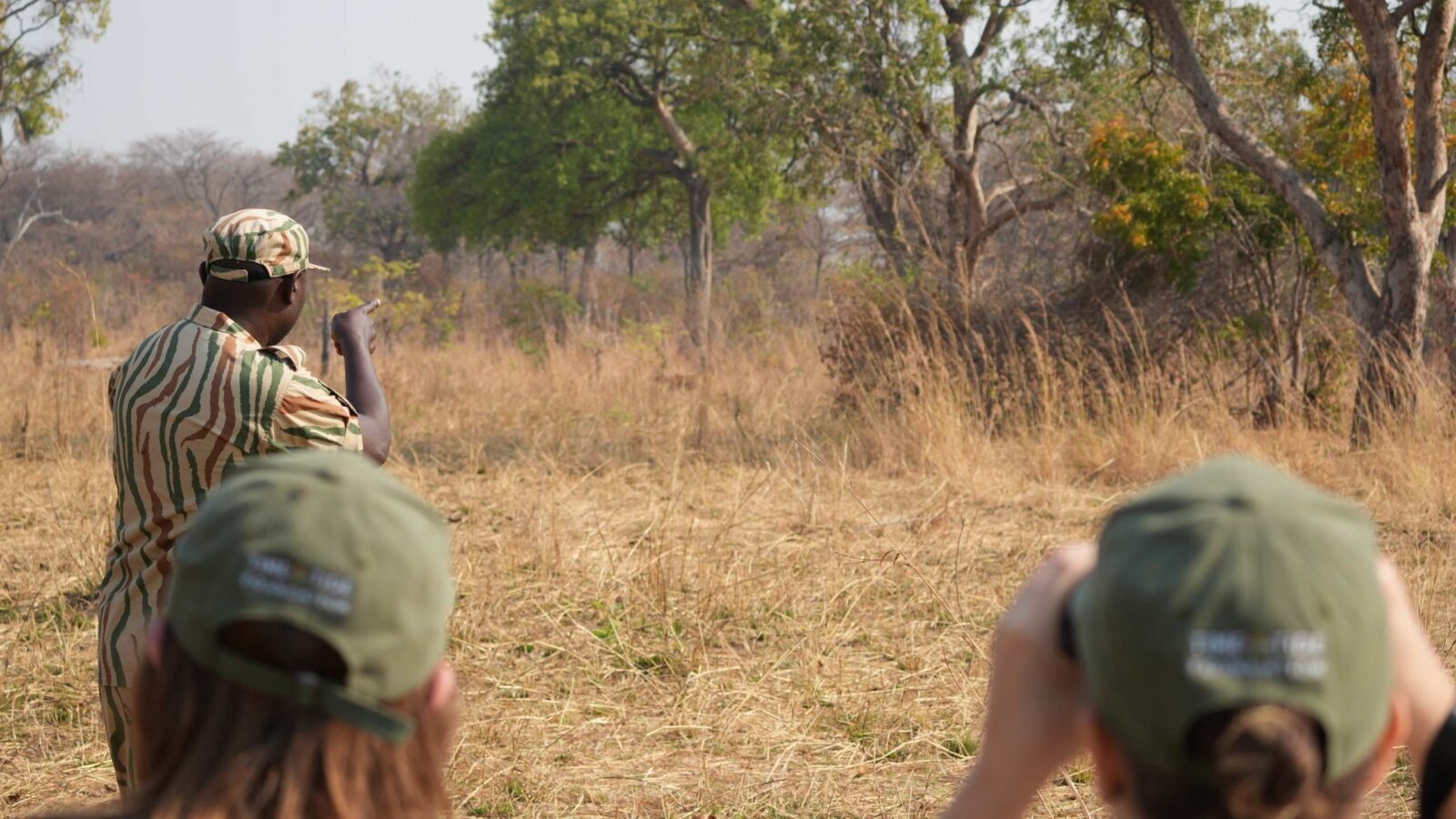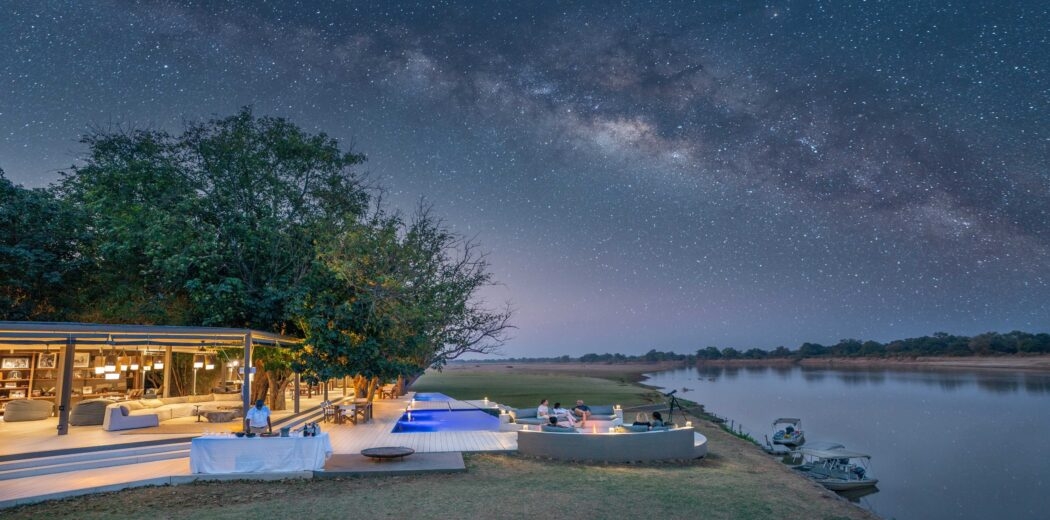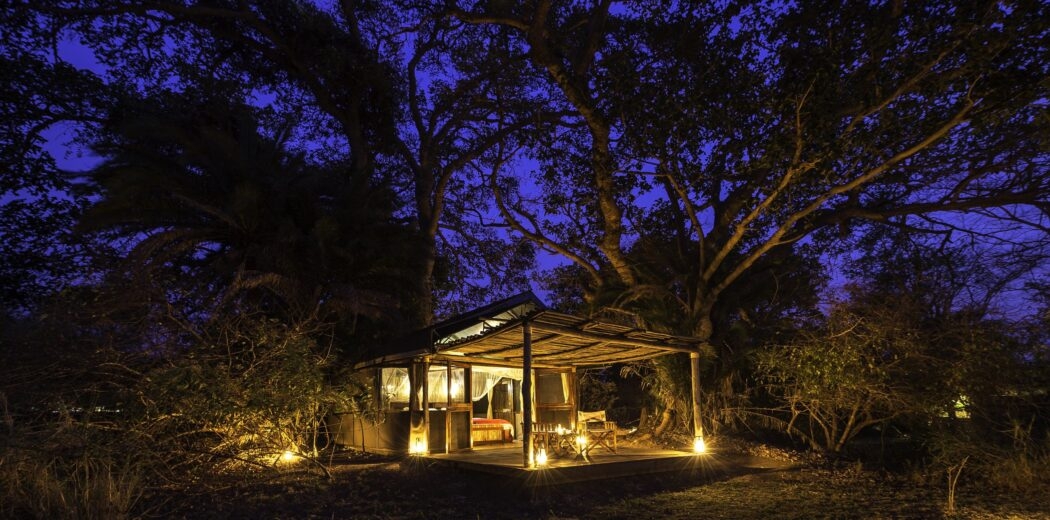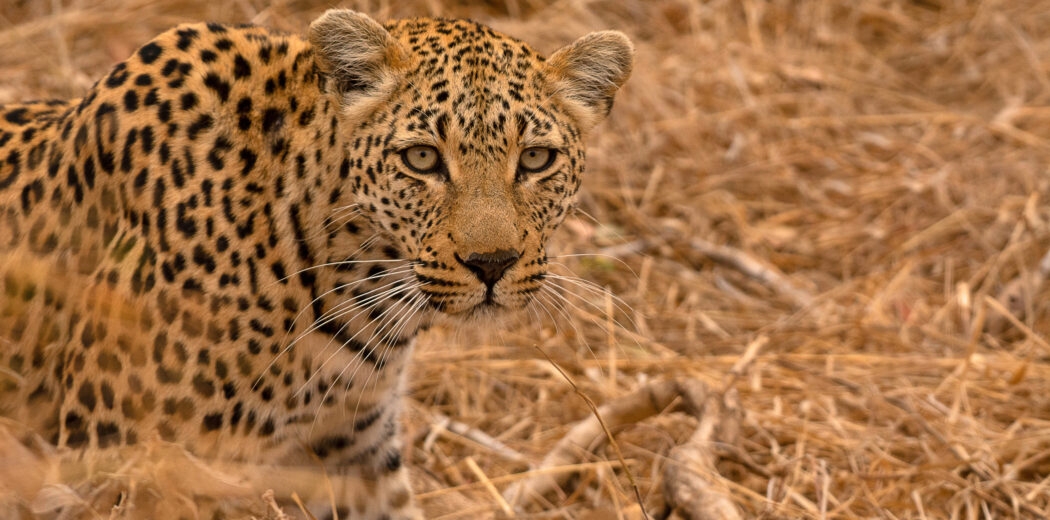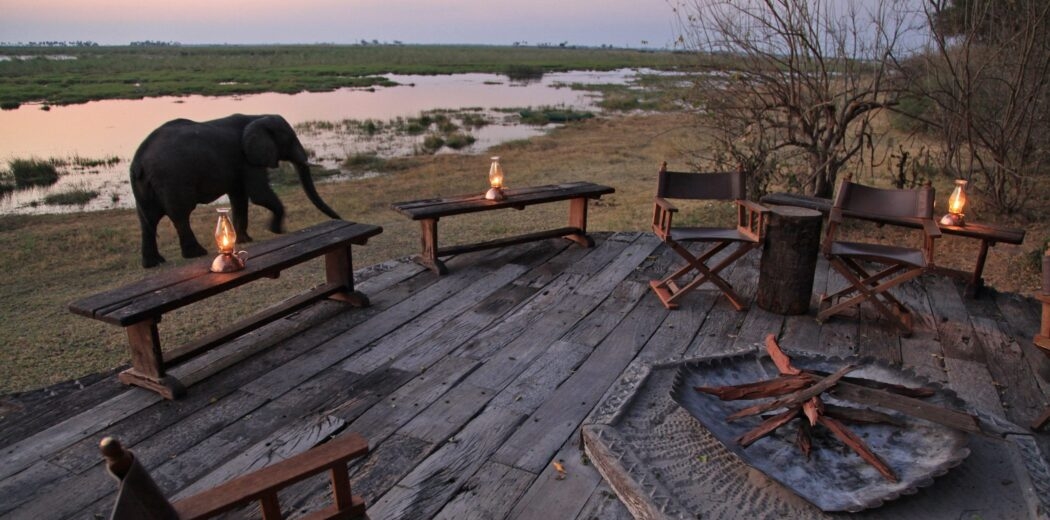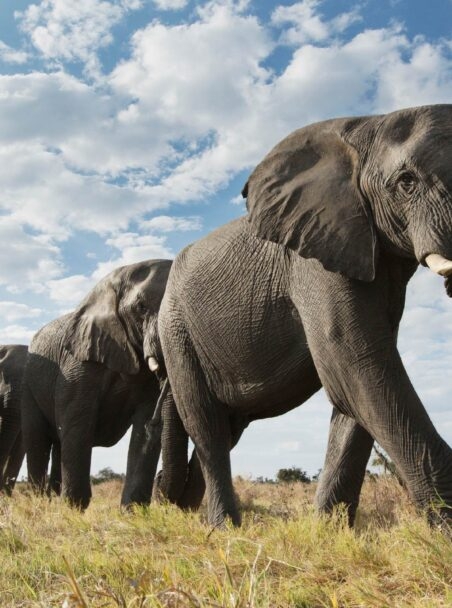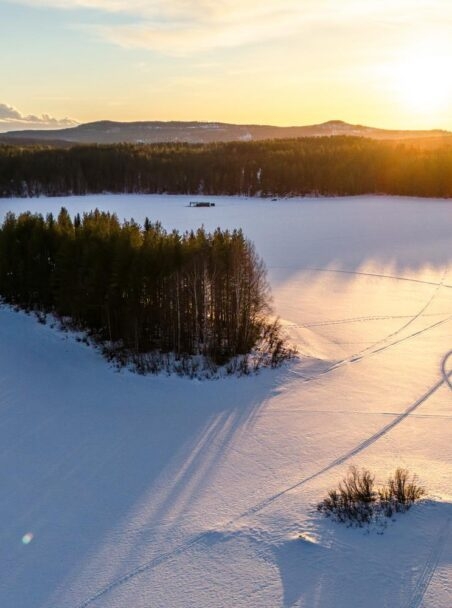Zambia is often referred to as the birthplace of walking safaris, thanks in large part to the groundbreaking work of Norman Carr. This legendary conservationist pioneered the concept of exploring the country’s stunning scenery and diverse wildlife on foot – creating an experience that’s not only more immersive, but also leaves a lighter footprint on the landscape.
Several decades later, Carr’s legacy lives on throughout Zambia. From South Luangwa National Park (where he did much of his work) to Kafue National Park and the Lower Zambezi, the country is absolutely brimming with walking safari camps, exclusive experiences and experienced guides who ensure a safe and rewarding adventure for every visitor.
A Zambia walking safari is among the most unforgettable experiences in all of Africa. Whether it’s a multi-day expedition, an overnight excursion or just a few hours out in the bush, here’s everything you need to know about this extraordinary style of safari.
Why Zambia Is Best for Walking Safaris
Since their inception in the mid–twentieth century, walking safaris have proliferated across Africa. We highly recommend trekking through the wilderness everywhere from Kenya to Namibia… but there’s something extra special about walking safaris in Zambia.
In fact, some of the best adventure safaris in Africa can be found in this landlocked nation. Jamey and Jody, two of our expert travel designers who specialise in this region, agree that Zambia is the best place to go for a quintessential walking safari.

The first reason is its history; some of the national parks and safari lodges here have been offering walking safaris for more than half a century. This means they’re well versed in the unique benefits, requirements and safety precautions that this type of adventure entails. Guides in Zambia are exceptionally well trained, knowledgeable and prepared for every possibility.
On top of that, Zambia’s wildlife areas are meticulously maintained. An enduring focus on conservation – including sustainable building practices and environmental education initiatives – means that your trip will help make a positive impact. It also supports the preservation of uncrowded and unspoilt landscapes, making the experience even more magical.
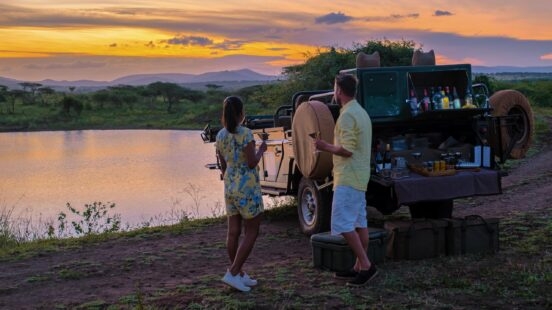
Best National Parks in Zambia for Walking Safaris
South Luangwa National Park
There are a total of 20 national parks in Zambia, but a few stand out. First up is South Luangwa National Park: Zambia’s original destination for walking safaris. This is where the concept was first introduced and popularised. Stretching across the Luangwa Valley, it’s home to dozens of animal species and hundreds of bird species. The focus here is firmly on walking safaris, encouraging you to observe small details that you might otherwise overlook.

Kafue National Park
Second on the list is Kafue National Park, the largest and oldest national park in Zambia. Here you’ll find especially rugged terrain and diverse habitats that host everything from hippos and otters to wild dogs and honey badgers. It’s a fantastic place to step off the beaten track and get up close to nature, opening up your senses to the sights and sounds of the wild.

Lower Zambezi
Last but not least, there’s the Lower Zambezi, known mainly for its abundant elephants and island-hopping buffalo. Walking safaris here can be complemented with canoe trips and game drives, giving you a variety of perspectives on the Zambezi River and its surroundings. The Lower Zambezi can also easily be combined with a visit to Victoria Falls farther south.
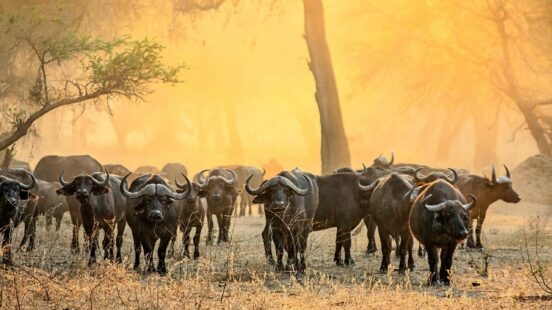

What to Expect on a Zambia Walking Safari
The best safari in Zambia is the kind that invites you to immerse yourself in the natural world, removing every barrier between you and the wilderness. This is the magic of a walking safari. If you’ve never been on one before, the first thing to know is that you’ll be accompanied by an expert local guide who will lead you through the bush and ensure your safety at all times.
The term ‘walking safari’ can refer to a variety of experiences. The shortest version is a daytime nature walk that lasts for a few hours. Some lodges and camps also offer overnight excursions where you’ll sleep out under the stars. And if you really want the full experience, you can opt for a multi-day walking safari in which you’ll make your way to a new camp every night.
Regardless of which experience you choose, you can expect to gain a new perspective on the environment and the many creatures that call it home. In Zambia, those creatures include elephants, giraffes, zebras, hippos, crocodiles and big cats – but also smaller animals like porcupines, pangolins, mongooses, frogs, various types of birds and fascinating insects.
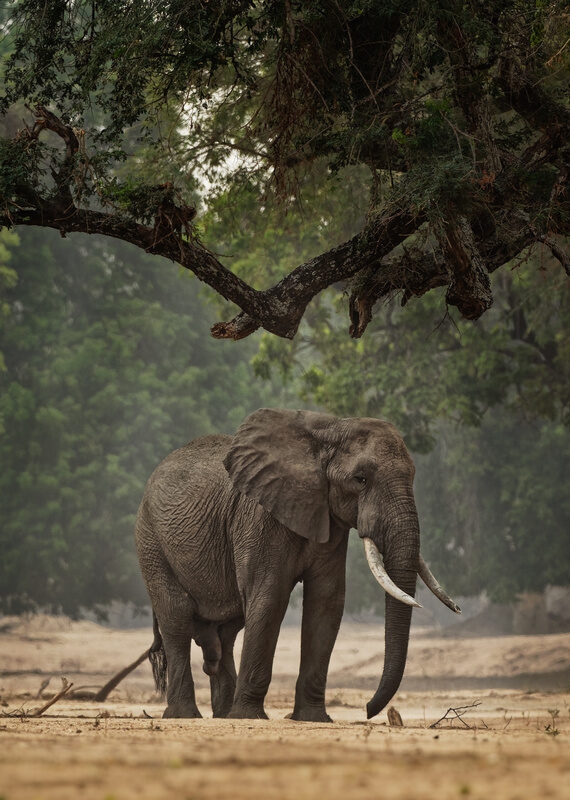
While it’s important to maintain a safe and respectful distance from larger animals and predators, a walking safari lets you observe smaller species and their habitats up close without disturbing them. You can examine animal tracks and delicate plantlife, hear the sounds of the bush, feel the ground beneath your feet and the warmth of the sun on your skin.
Speaking of sun, don’t forget to wear sunscreen and bring a water bottle. We recommend wearing comfortable clothes in neutral colours and bringing binoculars if you have them. Most walking safaris don’t require a high level of fitness, but you should be prepared to be on your feet for at least a few hours – so make sure you have comfortable shoes or hiking boots, too.
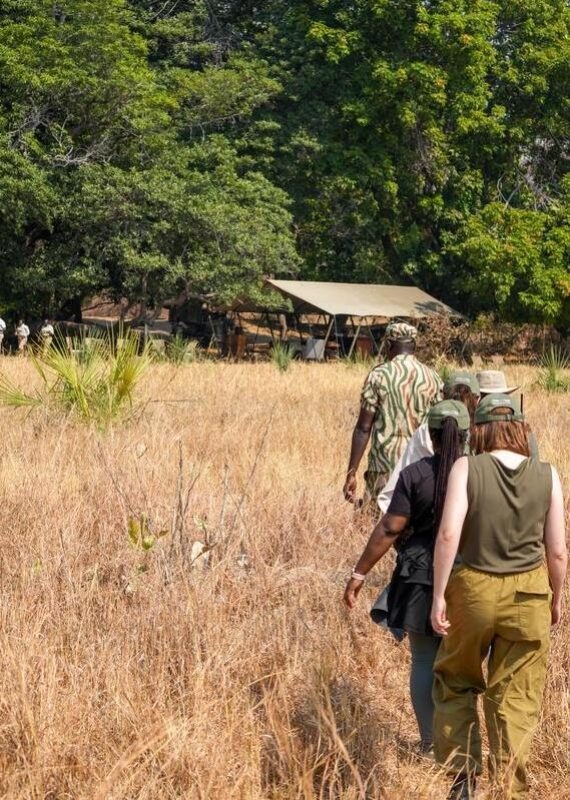
What’s the Best Time to Go on a Walking Safari in Zambia?
The best time to go on a walking safari in Zambia is during the dry season from May to October. Less rainfall means thinner vegetation, which creates better visibility for wildlife viewing. It also means that animals tend to congregate around water sources, so they’re easier to track and you’re likely to see more species.
The winter months of May, June and July offer the coolest weather, which means they’re also the most popular months to visit. Temperatures start to rise in August and reach their peak in October; if you don’t mind the heat, this is one of the best times to visit Zambia to avoid the possibility of peak-season crowds.
If you’re interested in walking safaris, we don’t recommend visiting Zambia in the rainy season from December to April, as the weather can make this type of activity impossible. November is a sort of shoulder month between the wet and dry seasons, so it can be a good time to visit as long as you’re okay with the chance of rain.

Top Zambia Walking Safari Lodges and Camps
Many of the best camps and lodges in Zambia offer walking safaris, but some are especially well suited to this style of adventure. We love remote camps that put you right in the middle of the most pristine landscapes, while also providing the comfort you’ll crave after trekking through the bush. Many of them also offer other experiences like game drives, boat trips and sleepouts.
In South Luangwa National Park, Chinzombo Lodge combines contemporary luxury with a secluded riverside location. If you’re looking for something a bit simpler, Mchenja Bush Camp is more understated but just as comfortable. Other favourites include Kakuli Bush Camp and Nsolo Bush Camp, both of which have just four tents/chalets and exceptional game viewing.
Luxury Accommodation in Zambia
Feeling inspired? Our safari experts are always on hand to help you plan your dream Zambian safari adventure.
